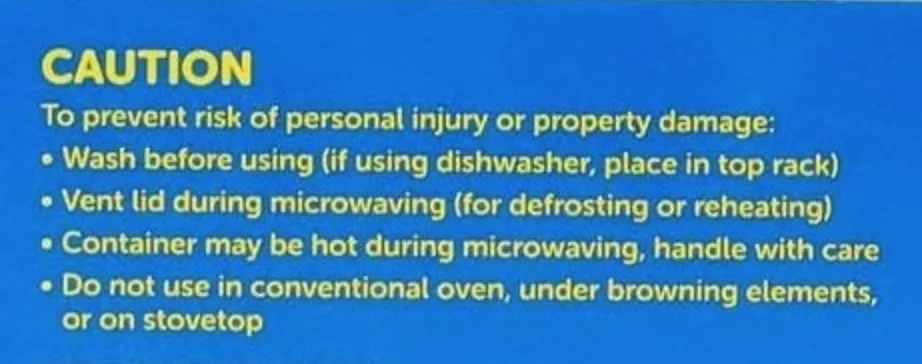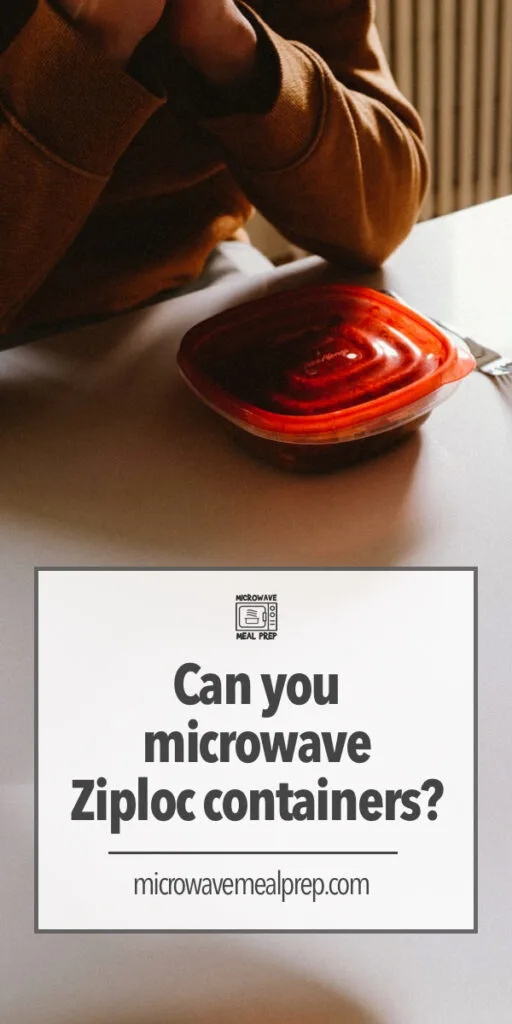Can Ziploc containers be heated? Can you put Ziploc containers in the microwave? Is it safe to microwave Ziploc containers?
It seems like common practice for people to pop their Ziploc containers into the microwave to conveniently heat up a lunchtime meal prep. Is that safe and can you microwave Ziploc containers?
From leftovers to lunchtime meal prep, snacks for kids and soup, plastic containers have a longstanding role in the modern day kitchen. Ziploc containers are affordable, durable and lightweight, making them a convenient choice for many food storage needs.
When it comes to Ziploc containers in the microwave, the debate continues over the safety of plastic in the microwave. I continue to remain doubtful of plastics ability to withstand the extreme temperatures achieved in the microwave.
Major brands like Rubbermaid, Tupperware and GladWare have a long-standing reputation when it comes to their respective lines of microwave safe products. Does that mean you can trust the labeling?
What are Ziploc containers made of?
Ziploc containers are made with polypropylene, also referred to as recycling #5. Polypropylene is the most common form of microwave safe plastic because it has a high melting point, which makes it good for hot-fill liquids.
Ziploc containers are BPA-free, dioxin-free and designed to be recyclable, however they are not made from recycled materials.
At what temperature do Ziploc containers melt? Ziploc containers consist of polypropylene, which has a melting point of approximately 320°F or 160°C. As a result, it can withstand the temperature of hot foods, but is not safe for use in conventional ovens, under browning elements or with stovetop heating.
Can you microwave food in a Ziploc container?
I have observed far too many people successfully microwaving Ziploc containers filled with food, however that doesn’t necessarily make it safe. Although you may be able to effectively microwave Ziploc containers, you might want to take a closer look at the manufacturer’s instructions for proper use.
When label directions are followed, Ziploc® brand products can be used with confidence. All Ziploc® brand Containers and microwavable Ziploc® brand Bags meet the safety requirements of the U.S. Food and Drug Administration (FDA) for temperatures associated with defrosting and reheating food in microwave ovens, as well as room, refrigerator and freezer temperatures.
Ziploc
Can you defrost in Ziploc containers in microwave? Manufacture guidelines visibly label the Ziploc containers as safe for defrosting and reheating foods only.
Can you cook in a Ziploc container? The answer is a definite no. The manufacturer’s directions do not recommend cooking in Ziploc containers.
Although the melting point of Ziploc containers is much higher than Ziploc bags, cooking usually involves temperatures that surpass the melting point of the polypropylene plastic. As a result, the company validates the use of microwave defrosting and reheating only.
Can you steam veggies in a Ziploc container? The answer is an unambiguous no. The heat transfer rate of steam is much higher than physical contact with boiling water.
Steam requires 9 times more energy than the amount of energy required to boil water. As a result, steam burns are definitely a lot worse than burns from boiling water.
Based on physics alone, it’s clear that steaming veggies in a Ziploc container yields a much higher temperature than polypropylene plastics are intended to tolerate.
How long can you microwave Ziploc containers? Ziploc containers don’t have clear defrosting and reheating standards set by the manufacturer. The only statement that you can you can perceive tangible information from is “for defrosting or reheating.”
Since the guidelines are vague at best, microwave Ziploc containers on medium to low power and use 1-minute increments. Make sure the container is vented to prevent the buildup of steam inside the container. Cautiously examine the Ziploc container after each 1-minute duration to confirm that the container is not overheating.
Things to know before you microwave Ziploc containers

Ziploc has developed a line of sealable plastic containers that are labeled microwave safe. However, the manufacture’s instructions reveal a few key details that should be carefully followed.
The instructions on the packaging declare that foods should only be reheated or defrosted in the Ziploc containers. Cooking is not recommended because the plastic containers are not designed to withstand temperatures associated with cooking foods.
To prevent overheating inside Ziploc containers, items with high fat and sugar contents should be cautiously microwaved. Fats and sugars can heat up to higher temperatures than water molecules, thus putting the plastic containers at risk of overheating.
Ziploc containers should be placed on a “microwave safe” dish and then microwaved with medium to low power using 1-minute durations.
In addition, the container should be vented to avert the build up of steam inside. After each 1-minute interval, carefully examine the container to ensure the plastic is not starting to overheat.
For best results, cut food up into small, uniform sized pieces when you meal prep food to reheat in Ziploc containers. The smaller sized bites will reduce the reheating time required to meet food safety temperatures standards.
Liquids tend to heat up much faster than denser foods like meats, starches and veggies.
Sauces and condiments should be added the last few seconds. Adding liquids earlier significantly increases the temperature within the container, which puts it at risk of overheating.
Diminished microwave time reduces the danger of overheating the plastic container. In addition, the chance of warping the container is lessened thereby extending the useable lifespan of the receptacle.
Conclusion
If you have experienced successful outcomes when you microwave Ziploc containers, then it’s simple and easy to resume with the exact same approaches. Even though all Ziploc containers are “microwave safe,” there are important instructions that are worthwhile to review on the manufacturer’s label.
When evaluating the subject in greater detail, I consider ceramic and glass microwave safe containers to be a much better substitute instead of microwave Ziploc containers.
Covered food heats up more efficiently and prevents food from drying out. A microwave food cover accelerates the cooking, defrosting and reheating method because by trapped steam and evenly disperses heat throughout the food.
Although all Ziploc containers are BPA-free and dioxin-free, the manufacturer has provided instructions on the packaging. The guidelines should be followed when you microwave Ziploc containers:
- Place container on a dish “safe for microwave use”
- Vent container in microwave
- Defrost and reheat only
- Do not overheat contents
- Use medium to low heat
- 1-minute or less
- Do not overfill container
Although Ziploc containers are reusable, I would not recommend microwaving old Ziploc containers that have been extensively microwaved. There is no clear life expectancy for Ziploc containers, but overextending ware and tear puts food at risk of toxic release.
If the container has seen better days, maybe it’s time to put it to use for another purpose other than food storage and microwaving.
Functionality and efficiency are important factors in the modern day kitchen, however it’s also important to understand the uses and misuses of the gear we choose to use around food.
If you are content using microwave Ziploc containers, then there is really nothing to worry about. However, if you continue to question the safety of heating up plastic containers in the microwave, then change over to ceramic or glass and simply sidestep the use of plastic in the microwave.

